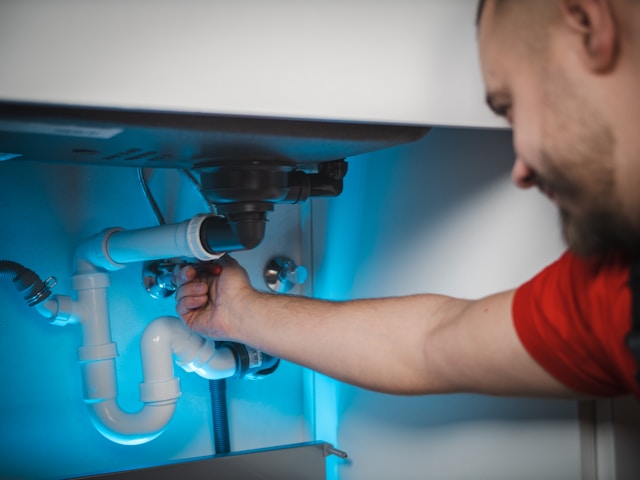Plumbing issues can be frustrating, especially when they strike unexpectedly. The good news? You don’t always need to call a professional plumber to handle every drip, clog, or leak. With a little know-how and a few basic tools, many common plumbing problems are easy to fix yourself even if you’re a total beginner.
This beginner’s guide to plumbing repairs will walk you through essential plumbing tools, simple fixes, safety tips, and when to call in the pros. Whether you’re a new homeowner or just looking to save money on maintenance, this guide will help you gain the confidence to tackle minor issues on your own.
Why Learn Basic Plumbing Repairs?
Knowing how to handle small plumbing problems can save time, reduce costs, and prevent larger damage to your home. DIY plumbing repairs are practical skills that empower you to maintain your home efficiently and avoid the inconvenience of waiting for a service call.
However, it’s equally important to recognize your limits. Some jobs are best left to trained professionals we’ll cover those later in this guide.
Essential Plumbing Tools for Beginners
Before you start any repair, it’s important to have a small plumbing toolkit on hand. These tools will help you manage most beginner plumbing tips and tasks safely and effectively.
Must-Have Plumbing Tools:
-
Plunger – A basic tool for unclogging toilets and drains.
-
Adjustable Wrench – Useful for tightening or loosening fittings.
-
Pipe Wrench – Offers more grip on rounded pipes and fittings.
-
Plumber’s Tape (Teflon Tape) – Helps seal threaded pipe joints to prevent leaks.
-
Drain Snake or Hand Auger – Great for breaking up deeper clogs in sinks and tubs.
-
Bucket and Rags – For catching water spills and cleaning up.
-
Safety Gloves – Protect your hands from grime, chemicals, or sharp edges.
Having these tools ready will make it much easier to handle basic issues without delay.
Common Plumbing Problems You Can Fix Yourself
Here are some of the most common problems that homeowners face and that you can fix with a bit of guidance and patience.
1. Leaky Faucets
One of the most frequent and annoying issues. A slow drip wastes water and increases your bill. This usually happens because of a worn-out washer or O-ring.
2. Clogged Drains
Hair, grease, and debris are common culprits. Fortunately, learning how to unclog a drain is a skill every DIYer should master.
3. Running Toilets
If your toilet keeps running long after flushing, it’s usually due to a faulty flapper or fill valve.
4. Low Water Pressure
Often caused by sediment buildup in faucet aerators or showerheads.
5. Dripping Showerheads
A worn washer or improperly sealed joint can cause this minor but persistent problem.
Step-by-Step DIY Plumbing Repairs
Here are simple instructions for some common DIY plumbing repairs:
Fixing a Leaky Faucet:
-
Turn off the water supply under the sink.
-
Remove the faucet handle using a screwdriver.
-
Take out the cartridge or washer, depending on the type of faucet.
-
Replace with a new washer or cartridge, then reassemble.
-
Turn the water back on and test.
Unclogging a Sink or Shower Drain:
-
Try a plunger first. If that doesn’t work:
-
Use a drain snake to pull out the blockage.
-
Flush with hot water and baking soda + vinegar to clean residue.
Replacing a Toilet Flapper:
-
Turn off water to the toilet and flush to empty the tank.
-
Remove the old flapper from the base.
-
Install a new flapper, ensuring a proper seal.
-
Turn the water back on and test.
Sealing a Leaking Pipe Joint:
-
Turn off water to the affected pipe.
-
Unscrew the joint using a wrench.
-
Wrap plumber’s tape around the threads of the male end.
-
Tighten the connection and check for leaks.
Cleaning a Faucet Aerator:
-
Unscrew the aerator from the faucet tip.
-
Soak it in vinegar to dissolve mineral deposits.
-
Scrub gently and reinstall.
Plumbing Safety Tips
Safety is key, even for minor plumbing tasks. Keep these beginner plumbing tips in mind:
-
Turn off the water supply before beginning any repair.
-
Locate your main shut-off valve in case of emergencies.
-
Wear gloves and eye protection when dealing with dirty or chemical-filled water.
-
Never overtighten fittings it can crack pipes or strip threads.
When to Call a Professional Plumber
Even if you enjoy DIY plumbing repairs, there are situations that require expert attention. Trying to fix these problems yourself could lead to costly damage or even danger.
Call a plumber for:
-
Major leaks or pipe bursts
-
Sewer line blockages or backups
-
Water heater issues
-
Gas line connections or appliance installations
-
Low water pressure throughout the entire home
If you’re unsure, it’s always better to be safe and get professional advice.
Conclusion
Learning basic plumbing repairs is a valuable life skill that can save you money, reduce stress, and give you confidence in managing your home. With the right tools and guidance, tasks like how to fix a leaky faucet or how to unclog a drain become manageable and even satisfying.

